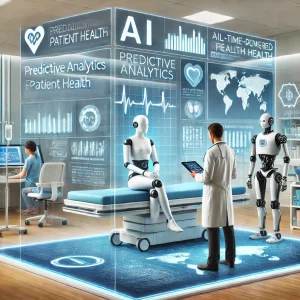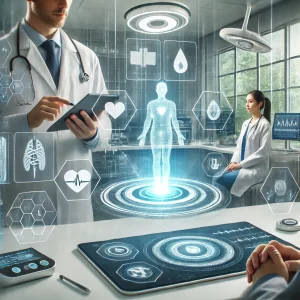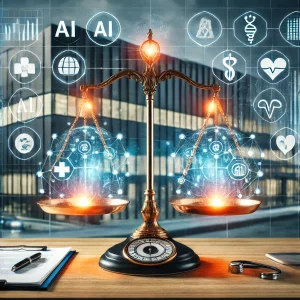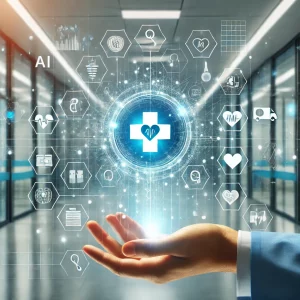The Health Information Exchange (HIE) market is pivotal in modernising healthcare by facilitating the secure and efficient sharing of patient data across organisations. This capability enhances care coordination and improves patient outcomes. The global HIE market was valued at approximately $1.6 billion in 2023 and is projected to grow at a CAGR of 10.5%, reaching around $3.9 billion by 2032 (gminsights.com).
Market Drivers and Growth Factors
1. Increased Adoption of Electronic Health Records (EHRs)
- Digitisation Initiatives: Global efforts to digitise healthcare are accelerating EHR adoption, leading to improved clinical decision-making and patient safety.
- EHR Adoption Rates: In developed markets, EHR adoption rates are expected to surpass 90% by 2030.
2. Regulatory and Government Support
- Policy Mandates: Governments are investing in healthcare digitisation through financial incentives and policy mandates, such as the 21st Century Cures Act in the US and GDPR in Europe, which promote secure data-sharing solutions.
- National Health Plans: Countries in the Asia-Pacific region are introducing national health digitisation plans to enhance healthcare delivery.
3. Demand for Real-Time Interoperability
- Fragmented Data Sources: Healthcare systems often rely on fragmented data sources, leading to incomplete patient records. HIE platforms address this by enabling real-time, cross-provider data sharing.
- Adoption of Standards: The implementation of FHIR (Fast Healthcare Interoperability Resources) standards is improving system compatibility and interoperability (hl7.org).
4. Cloud-Based HIE Solutions on the Rise
- Advantages of Cloud Platforms: Cloud-based HIE solutions offer scalability, flexibility, and reduced operational costs.
- Market Growth: By 2030, over 70% of HIE platforms are expected to be cloud-based (marketresearch.com).
- Enhanced Data Management: Cloud-based solutions enable faster deployment and real-time data updates.
5. Growing Role of AI and Machine Learning
- Enhanced Data Analysis: AI-driven HIE platforms can identify patterns in patient data, improving diagnosis and treatment.
- Predictive Care: Machine learning enhances predictive care models and automates data entry, reducing clinical errors.
- Clinical Decision Support: AI-based decision support systems are reducing clinical errors and improving treatment efficiency.
Challenges and Barriers
1. Data Privacy and Cybersecurity Risks
- Increase in Data Breaches: Healthcare data breaches have increased significantly, raising concerns about data privacy and security.
- Regulatory Compliance: Compliance with regulations like HIPAA and GDPR adds complexity to data management.
- Security Measures: Advanced encryption and threat detection are critical to secure data exchange.
2. High Implementation Costs
- Financial Barriers: Small and mid-sized healthcare providers face financial challenges in adopting HIE platforms due to infrastructure upgrades and staff training costs.
- Cost-Effective Solutions: Cloud-based solutions are helping to reduce some of these cost pressures.
3. Lack of Uniform Data Standards
- Interoperability Challenges: Inconsistent data formats and legacy systems hinder interoperability.
- Standardisation Efforts: FHIR and HL7 standards are improving compatibility, but full adoption remains gradual.
4. Resistance to Change
- Adoption Hesitancy: Healthcare providers accustomed to legacy systems may resist migrating to HIE platforms, especially smaller institutions with limited IT resources.
Competitive Landscape
The HIE market is highly competitive, with established players and emerging disruptors driving innovation.
| Company | Focus Area | Recent Developments |
|---|---|---|
| Cerner Corporation | EHR and interoperability | Acquired by Oracle to expand AI-based care models. |
| Epic Systems | Patient engagement and EHR | Integrated wearable device data into patient records. |
| Allscripts Healthcare Solutions | Cloud-based HIE platforms | Launched AI-driven analytics for real-time data insights. |
| IBM Watson Health | AI and data security | Developing predictive analytics for early diagnosis. |
| Oracle Health | Large-scale healthcare systems | Focus on integrating AI and cloud-based HIE platforms. |
Regional Market Performance
North America
- Market Leadership: North America holds the largest market share due to strong regulatory support and high EHR adoption rates.
- Advancements in Care Models: There is a growing demand for predictive care models utilising AI technologies.
- Government Backing: US government programs are offering financial incentives for adopting HIE systems.
Europe
- Data Protection Compliance: GDPR compliance is driving secure data exchange across healthcare systems.
- Cross-Border Initiatives: National and cross-border healthcare digitisation initiatives are increasing, with countries like Germany, France, and the UK leading market growth.
Asia-Pacific
- Rapid Growth: The Asia-Pacific region is the fastest-growing market due to rising healthcare investments.
- Government Initiatives: Countries such as India, China, and Japan are introducing government-backed HIE systems.
- Telemedicine Expansion: The expansion of telemedicine and mobile health services is driving demand for HIE solutions.
Middle East and Africa
- Healthcare Investments: The UAE and Saudi Arabia are leading investments in healthcare digitisation.
- Public-Private Partnerships: Governments are partnering with private companies to improve rural healthcare access.
- Digitisation Growth: Africa’s healthcare digitisation rate is increasing annually, enhancing the adoption of HIE platforms.
Emerging Trends and Innovations
1. Blockchain for Data Security
- Tamper-Proof Storage: Blockchain-based HIE platforms offer tamper-proof data storage, enhancing data integrity and patient trust.
- Decentralised Systems: Startups are exploring decentralised health record systems to improve data security and accessibility.
2. Patient-Centric Models
- Enhanced Engagement: HIE platforms are integrating patient portals and mobile apps.
- Self-Service Models: Patients can now access their health records and track treatment plans.
3. Telehealth and Remote Monitoring
- Real-Time Monitoring: Telehealth platforms are now directly connected to HIE systems.
- Wearables: Data from wearables like Fitbit and Apple Health is being integrated into patient records.
4. AI-Powered Predictive Care Models
- Early Diagnosis: AI algorithms are predicting disease progression and treatment outcomes.
- Reducing Readmissions: Predictive care models are reducing hospital readmissions.
Market Segmentation
| Segment | Details | Forecasted Growth |
|---|---|---|
| By Type | Directed, Query-Based, Consumer-Mediated | Query-based growing fastest due to real-time data demands. |
| By Component | Software, Services | Services leading due to demand for customisation. |
| By Deployment | Cloud-Based, On-Premises | Cloud-based to reach 70% market share by 2030. |
| By End-User | Healthcare Providers, Payers, Pharmacies | Healthcare providers remain dominant segment. |
Future Outlook
The HIE market is poised for significant growth as healthcare providers adopt AI-driven, cloud-based platforms to improve patient care and reduce costs. Enhanced regulatory support, rising demand for predictive care models, and the integration of blockchain and IoT data will define the next decade of market development.
Conclusion
The Health Information Exchange market is at the intersection of technological innovation and regulatory change. AI, cloud computing, and blockchain are redefining how healthcare data is shared and used. Organisations that focus on secure, interoperable, and patient-friendly solutions will lead the next phase of market growth.










